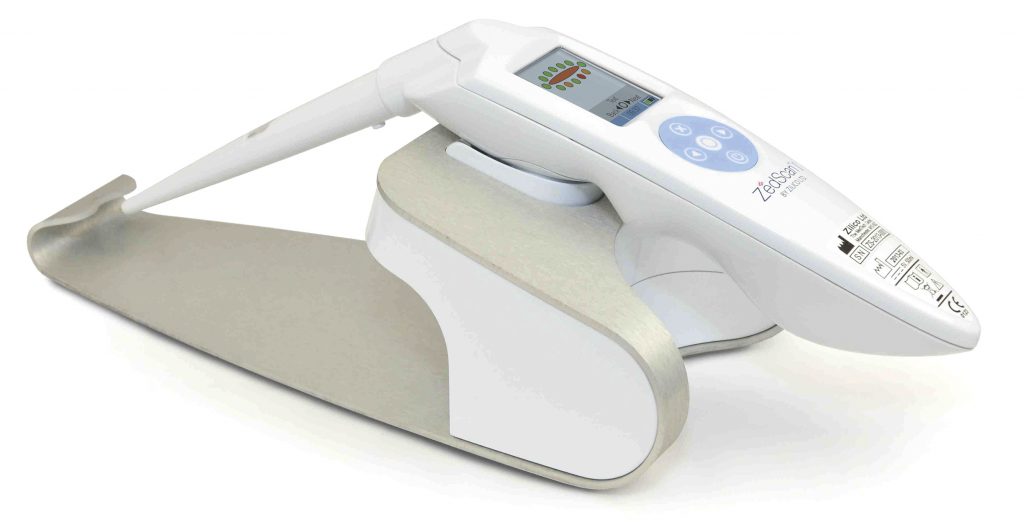- In partnership with Zilico Ltd, the University of Sheffield is working to develop a pain-free, non-invasive and instantaneous method to detect oral cancer
- £1 million in funding has been awarded to the partnership to develop a functional prototype of a new device that uses Electrical Impedance Spectroscopy (EIS) technology for the early detection of cancerous lesions
- The number of cases of oral cancer in the UK has increased by 135 per cent in the past 20 years
A research collaboration has been awarded £1 million in funding from SBRI Healthcare – an NHS England initiative – to test and develop a pain-free, non-invasive and instantaneous method to detect oral cancer.
Once built and tested, the new device could enable doctors to detect oral cancer earlier and more accurately, reducing the need for patients to have invasive biopsies. This in turn could provide better outcomes for patients and significant cost savings for the NHS.
The pioneering device is to be developed with medical device diagnostics company Zilico Ltd - born out of a partnership between the University of Sheffield and Sheffield Teaching Hospitals NHS Foundation Trust - using the same patented technology as its ZedScan device, which is now in use in the NHS for the early and non-invasive diagnosis of cervical cancer.
- 
Researchers from the University of Sheffield and Sheffield Teaching Hospitals previously demonstrated that the principle of its electrical impedance spectroscopy (EIS) technology, where normal, precancerous and cancerous tissue can be differentiated according to its electrical properties could be useful for detecting oral cancer. The ‘proof of concept’ study involved 47 patients who were recruited from the Charles Clifford Dental Hospital.
Typically, suspicious oral lesions are inspected and diagnosed visually, but the visual indicators of disease can be misleading or non-apparent in some cases. Many other signs and symptoms of mouth cancer such as constant bad breath and difficulty chewing or swallowing can also be caused by other things than cancer, so a definitive diagnosis can only be made through a biopsy of the tissue.
The new device could enable patients to receive real-time diagnosis at the primary point of their care and the University is now working with Zilico to develop a functional prototype to be assessed and trialled for use in the NHS.
It is anticipated that the prototype will be ready for testing on a group of volunteers, with the aim to progress the project to a full clinical trial in the next 12 months.
Dr Keith Hunter, Professor of Head and Neck Pathology, at the University of Sheffield’s School of Clinical Dentistry and Insigneo Institute for in silico Medicine, said: “Mouth cancer is on the increase in the UK and globally, and we need new tools to be able to diagnose it earlier, as the survival rate for oral cancer patients depends on how early the disease is diagnosed and treated.
“Electrical impedance spectroscopy could help us to diagnose oral cancer earlier and more accurately, even when these cell changes may not be visually apparent. This could reduce the need for biopsies where there is no disease indicated – helping us to reduce patient anxiety and improve patient comfort.
“Hopefully developing less invasive techniques of diagnosing oral cancer will encourage more people to come forward with oral problems.”
Jamie Healey, Lead Clinical Scientist at Sheffield Teaching Hospitals NHS Foundation Trust, said: “We have collaborated with Zilico on the technology developments which form the basis of ZedScan for many years, and we are delighted to see that the clinical applications of electrical impedance spectroscopy are broadening, offering the potential for many more patients to benefit from this novel technology.”
To further the scientific evidence and applications for EIS to be used in diagnosing oral cancer, the collaboration has included a diverse range of University departments, including clinicians and researchers from Insigneo, the School of Health and Related Research (ScHARR) and the Department of Computer Science.
This research included Dr Dawn Walker and Dr James Heath from the Department of Computer Science developing cellular and tissue-scale finite element (FE) models to inform the classification of different tissue types based on EIS measurements collected from normal and diseased oral tissue samples.
Jim Chilcott, Professor of Healthcare Decision Modelling at ScHARR, said: “Using a whole disease modelling approach we are bringing together the available evidence on oral cancer diagnosis, management and treatment to optimise the design of the new oral device and underpin its diagnostic efficacy.”
“An EIS device for the diagnosing of suspected oral cancer has the potential to make an important contribution to the care and management of the disease, quickly removing uncertainty and anxiety for those without cancer and improving the journey to early treatment for those with cancerous and precancerous lesions.”
Note: This news item was originally published by the University of Sheffield.
